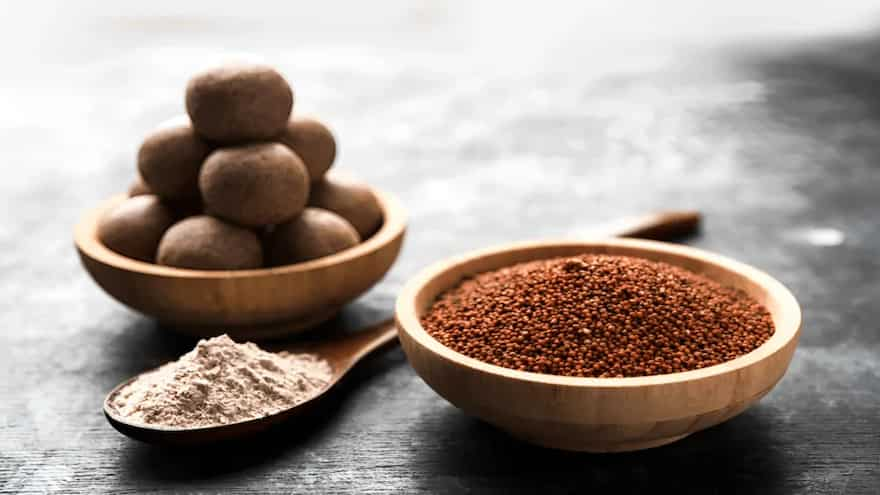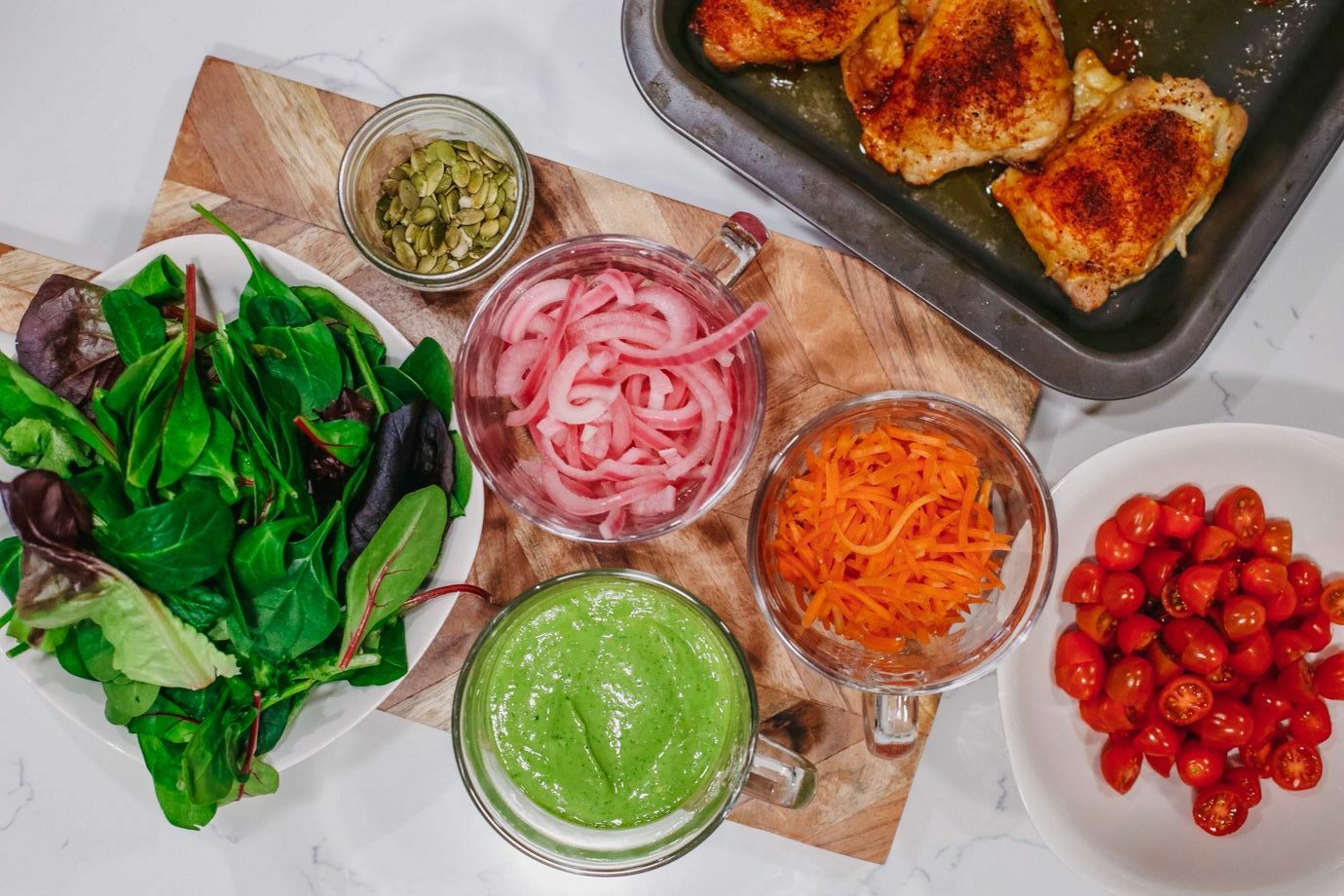Ragi grains, flour and laddoo, Image Source: Freepik
Ragi has a long history of use in India. It is also called Eleusine coracana or finger millet. The dry and semi-arid regions of Africa and Asia are well known for growing this annual herbaceous plant as a cereal crop. The tetraploid species, which self-pollinates, most likely descended from Eleusine africana, a wild cousin. Ragi, along with many other millets, formed significant ingredients of the everyday diet in India, until nearly five to six decades ago. Rustic and coarse, yet nutritious, crops like ragi, bajra, jowar, and kodra fell by the wayside as people began to favour more refined diets. The once-orphaned ragi is enjoying a moment. Thanks to prompt action by the government and international organisations like the WHO. Even wealthy people have become interested in it.
Also Read:Winter Is Coming: Try This Ragi-Bajra Immunity Laddo
One would be surprised to know that more than 2000 years ago, ragi was a highly prized nutritious crop in traditional agricultural methods in India. It is a versatile millet. One can prepare flatbreads, crepes and pancakes with its flour. Meanwhile, it can perfectly replace rice grain in dishes such as pulao, rice, khichdi, etc. Not to forget the use of ragi as an indigenous drink like mandia peja of Odisha. If you are still not convinced about ragi, consider its health benefits.
Helps in controlling and lowering diabetes
Often, people with diabetes are recommended to go off rice and wheat. In such cases, they can resort to ragi. Magnesium is abundant in ragi, often known as finger millet. Magnesium helps to maintain blood sugar levels by reducing our body’s insulin resistance. Phytates, tannins, and polyphenols, plant compounds that slow digestion, are also abundant in ragi. People with diabetes mellitus who have high blood sugar are helped by this.
Aids in treating IBS
Irritable bowel syndrome, or IBS, is characterised by pain, irregular bowel movements, diarrhoea, gas, and constipation. Ragi is endowed with dietary fibre goodness at greater levels than many other types of grain. Eating more fibre regulates faecal bulk, improves the flow of food and other materials through the intestines, and positively impacts bowel movement. So, eating a meal with ragi porridge for breakfast promotes a healthy metabolism, treats IBS symptoms, and even helps lower the risk of colon cancer.
A rich source of plant-based protein and amino acid
Ragi is a distinctive plant-based source of high-quality proteins because it contains several essential amino acids. It provides methionine, an amino acid based on sulphur to restore the health of skin and hair, valine and isoleucine to heal damaged muscular tissues, and threonine to promote the development of teeth and enamel and guard against gum disease.
Heart friendly diet
Ragi has no salt or cholesterol at all. So, people with cardiac conditions can safely eat dishes cooked with ragi flour. Additionally, the quantity of dietary fibre and vitamin B3 or niacin improves good HDL levels and reduces bad LDL levels. It prevents plaque and fatty deposits in heart arteries, enhancing cardiac muscle performance and overall heart health.
Read the full article here.





